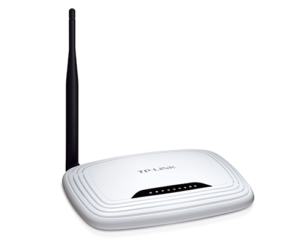By Chris Knight
Attacks on businesses are coming from a whole different direction to what your IT department might be used to. From hijacked routers, smart hubs and printers to deeply hidden attack code in documents or other web services that traditional solutions are no match for.
Pity the poor receptionist who opens an important looking email she thinks is from her boss with an attached spreadsheet. She launches that, and without knowing it compromises her whole company’s IT infrastructure, data and services. Or, consider the increasing number of weak devices with common passwords or broken encryption like brand name and generic IP cameras, many network routers and printers, that can be attacked directly with bots hunting down millions of these devices 24/7.
Once a hacker has found any exploit through phishing or direct attack, they can steal your data, hold it for digital ransom, or bring your business crashing to its knees. All done invisibly in a matter of seconds, just because they can. Traditional firewall and antivirus software is not sufficient to intercept these types of attack, it takes always updated services with AI smarts to track down brand new threats to protect your endpoints, services and servers from attack.
Attacks have destroyed the IT systems of giant companies like shipping firm Maersk while endless small businesses are wiped out due to a lack of precautions, thinking it will never happen to them. Computers and services might be considered a consumable, almost throwaway service, by many, but when their files vanish and they don’t have backups, reality bites very hard indeed.
As we all rely increasingly on IT to get more of our business processes done, hackers know they can take systems and services down, and many companies will pay up to get them back, even if the criminals have no intention of restoring them. In short, this is a battle your business cannot afford to lose.
Protect Your Business From All Threats
As there is no such thing as “totally secure” in the digital era, your business needs a range of tools to protect the company’s IT infrastructure and data. You need to protect both endpoints (including PCs, smartphones, tablets and other gadgets) and your cloud presence and remote services.
Every company also needs network security tools and design advice to build a network robust enough to defend against hackers and agile enough to adjust should a DDOS or other outage occur. Startups with a cluster of random network appliances are at massive risk, thinking they are too small to be hit, but automated attacks can easily devastate the company before people can react.
With all the services in place, there is still no guarantee, so penetration testing can automatically see just how secure your network is and highlight any weak spots. And the attacks can be run repeatedly using the latest information and weaknesses to check if your systems are secure.
Using any or all of these services, your business stands a better chance of survival than using the traditional methods alone. And if there is an attack, incident response gives you professional advice rather than having staff floundering around looking for the source.
You should also ensure your staff are well trained in how to spot phishing attacks, taught not to bring random personal devices into the office, and to make sure they backup their own data alongside the company’s own precautions, in line with any legal requirements.
Tomorrow or next week, the threat landscape will change again with new risks, perhaps through your company chatbot or a partner’s cloud services. Using always-on, multi-level, security, you can protect against the vast majority of threats.


